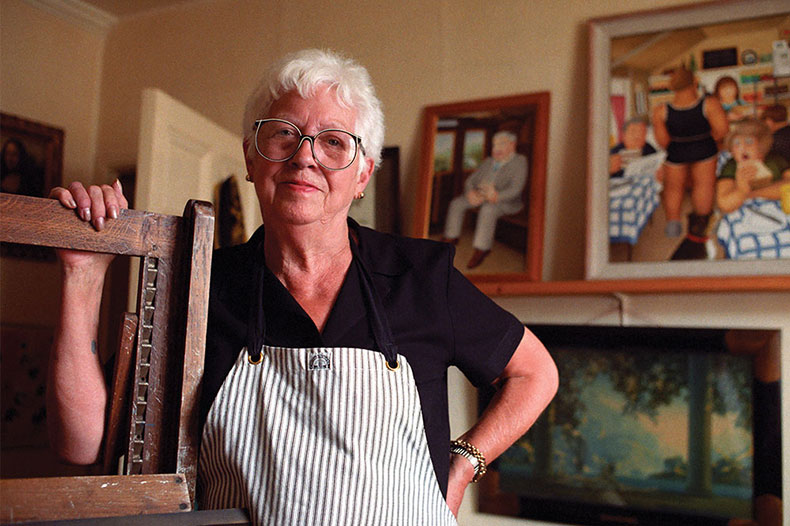From the November 2023 issue of Apollo. Preview and subscribe here.
Recently, I mentioned to someone that I was driving down to Wiltshire listening to embarrassing music. They pressed me to name the music I was listening to. I confessed that it was an album by High School Musical: The Musical: The Series star turned pop princess Olivia Rodrigo. Rodrigo has just released her second album Guts, which contains more songs about heartbreak and love gone awry. It’s not scholarly, but it is catchy.
Luckily, my interlocutor told me there was nothing to be embarrassed about in liking Olivia Rodrigo, but I am not sure that is quite enough to remove the stigma of listening to pop music for adolescents. Strangely, I am not sure that a correlative exists in the visual arts. Is there such a thing as ‘embarrassing art’ that people love but don’t admit to? In the excellent Gallery of Modern Art in Glasgow (GoMA) there is a display of three paintings, one by Stanley Spencer and two by Beryl Cook. The wall text politely remarks that Cook’s ‘works are immensely popular, but have never received the same critical attention’. Around the time of her death in 2008 it was said that Cook was well-loved by the public, which suggested that those who did like her were happy to say so. Critics used to describe her work as ‘cheering’. But here we have an institution trying to reassess her through comparison with an acknowledged master of the Modern British canon, trying to save her from embarrassment.

The painter Beryl Cook in her studio in Plymouth. Photo: Marc Hill/Alamy stockphoto
Glasgow’s GoMA is not alone in seeking to revive Cook’s reputation. Joe Scotland, the director of Studio Voltaire in south London, when asked who he regarded as underrated, said: ‘Beryl Cook is really underrated as an artist. The majority of the UK art world just see her as a naff calendar artist. I love her paintings! So much around class, commerciality, social history, body size, pleasure…’ The terms Scotland used to suggest that Cook is worth another look are similar to the wall text in Glasgow, e.g. ‘The gentle accessibility of Cook’s paintings is challenged by her inclusion of racist graffiti in the background of By the Clyde.’ Many admirers of Cook might be surprised to hear that the apparently joyful world of her paintings might be disrupted by such a thing as racism. Yet arguing for her importance as an artist because of her subject matter seems to overlook the centrality of form and style in art.
But perhaps it also suggests why it is so much harder to have an embarrassing art interest, or what was sometimes referred to – in an odd conflation of enjoyment and sin – as a guilty pleasure. Artistic styles were never tarred with the brush of disposability in the way pop music used to be. Commercial art was superseded by photography and realism has its own technical demands. There isn’t an aesthetic that immediately reeks of commercialisation or irrelevance – or if there is, it just tends to be considered bad art.
Yet the approach of both Scotland and GoMA show that there’s a fundamental difficulty that bedevils discussions of art at the moment. The only language of approbation we have is thematic. If an artist deals with ‘important’ themes, they are considered to be important artists. Taken to an extreme, art is reduced to sloganeering – and if the slogan chimes with your existing views, then you can like the artwork. Such an approach flattens both the art and the wider world. Now, more than ever, we need to appreciate things both at face value and in all their complexity. Otherwise we are all in danger of making some big mistakes just because things seem to look fine, as Rodrigo almost sings in ‘Vampire’.
From the November 2023 issue of Apollo. Preview and subscribe here.
